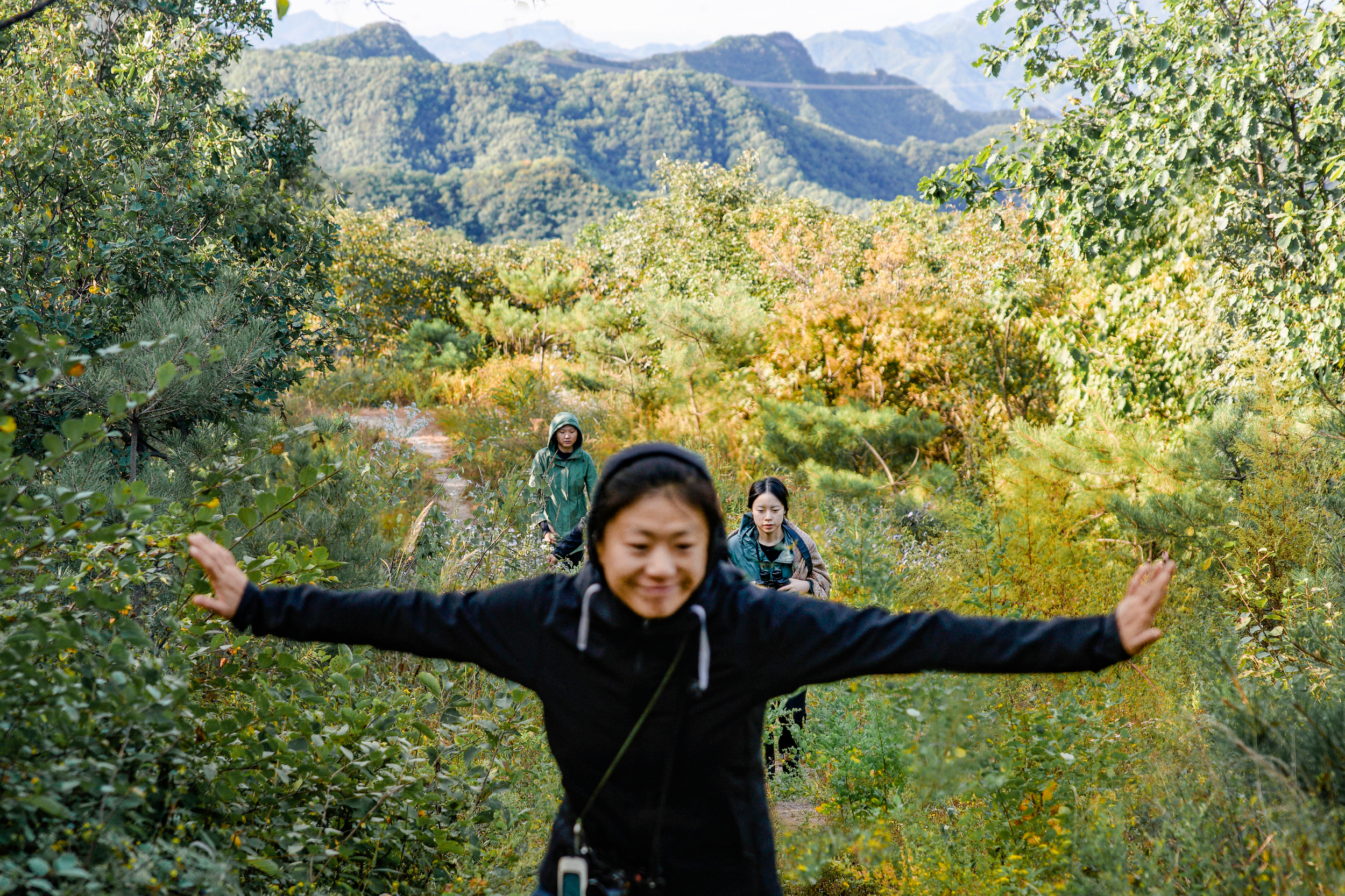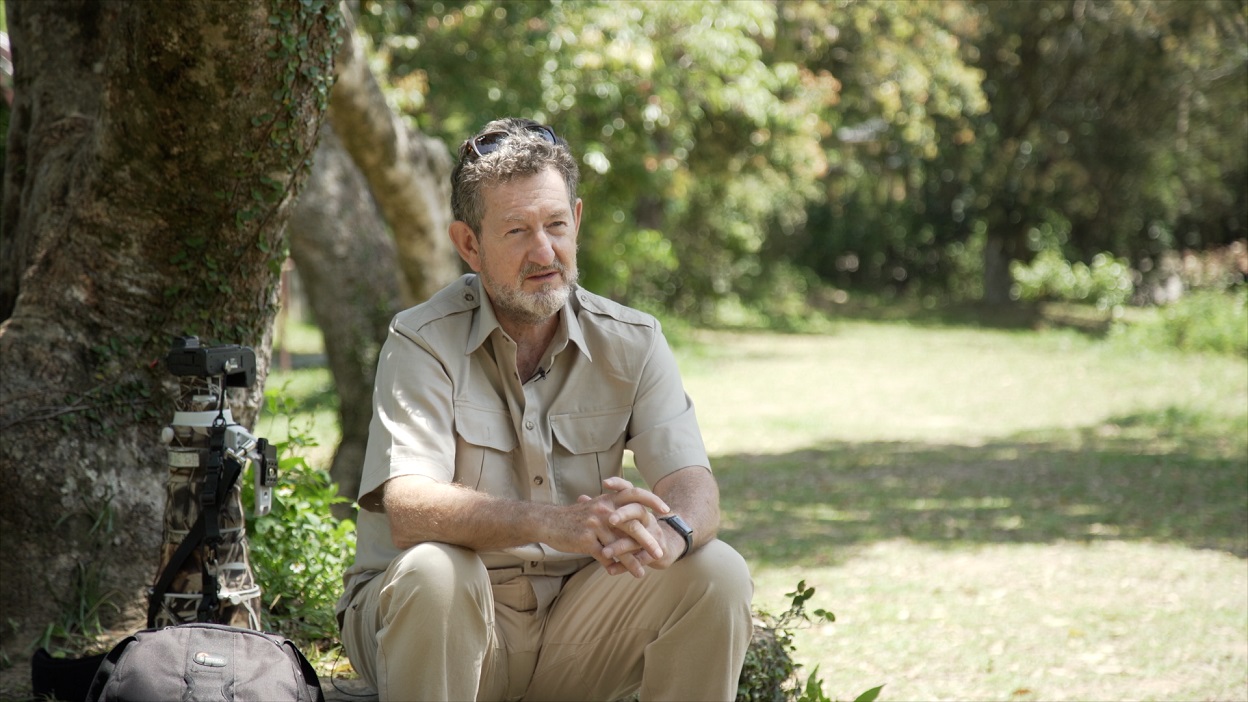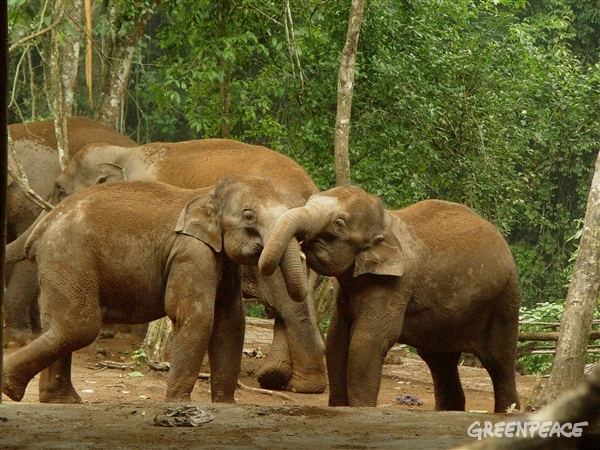
Young Asian Elephants in Xishuangbanna, Yunnan Province ©Beijing Normal University
In the last few weeks the world has been awakened to the plight of endangered animals and the mostly unnecessary and avoidable dangers they face. The shooting of Cecil the lion, a rare black-maned lion from Zimbabwe, who was also the subject of Oxford University tracking and research, by American dentist Walter Palmer shocked the world’s online public last month. Disgusted and angry comments flooded Twitter, Facebook and news sites’ comment sections. A few weeks later images of Sabrina Corgatelli posing, smugly satisfied, with a freshly murdered giraffe again shocked the public.
Today is a day to remember the danger faced by another of the world’s great animals, the elephant. World Elephant Day was established in 2012 and aims to raise awareness of the plight of elephants around the world. The dangers these gentle and intelligent animals face range from poaching for entertainment and the increasingly profitable ivory trade, to mistreatment in circuses and the work place, and the destruction of their natural habitat.
Poaching for ivory is the major danger faced by elephants, particularly in Africa. In the words of Pulitzer Prize winning journalist, Jeffrey Gettleman, “Africa is in the midst of an epic elephant slaughter.” Given that the trade is mostly illegal, there are no accurate figures on how much it is worth annually. However, an enormous boom in prices over the last two decades has made the ivory trade increasingly profitable. Today ivory can fetch US$1000-1500 per kg, meaning that one tusk can cost as much as US$63,000. For impoverished Africa, this market price is certainly an incentive to poach.
It is worth noting, also, that China is currently the largest market for this illegal product. Perhaps as much of 70% of the world’s ivory is flowing into the Chinese market. Recent campaigns in China have aimed to raise awareness of the ethical issues behind the industry. But it is still far too early to tell if these campaigns have been successful.
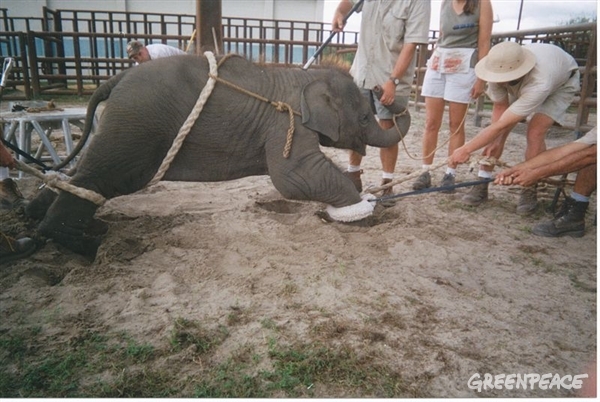
A baby elephant being trained for circus. Heather Norwood, Wikimedia Commons
Elephants also face all sorts of cruelty in the unnatural environment of the work place, whether that be circuses in which elephants are made to show off skills such as playing football and dancing, the tourism industry, or industries in which elephants are beasts of burden, such as logging.
Throughout history, elephants have also been threatened by humans in a less directly violent manner. The gradual deforestation of South East Asia, India and also China (a study in 2012 found that during the Shang and Zhou dynasties elephants were common across central and southern China) have over centuries forced elephants out of their natural habitats.
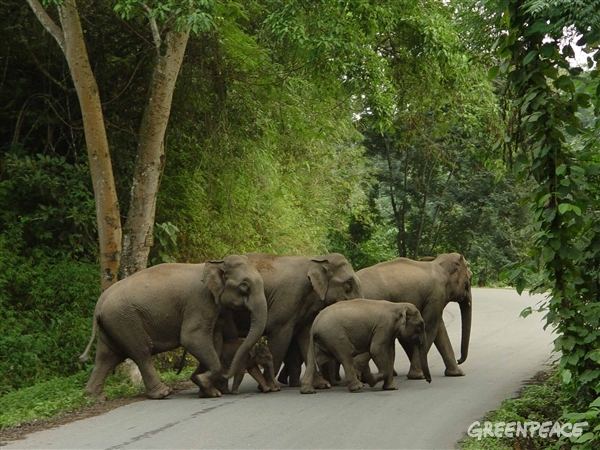
A herd of elephants cross a road in Xishuangbanna, Yunnan Province ©Beijing Normal University
The 200 or so elephants who live in the hills and forests around Xishuangbanna, in the south western province of Yunnan, are China’s only surviving wild elephants. As China develops, deforestation accelerates and urbanisation sweeps across the country, they too are facing a threat to their existence.
Elephants are one of the world’s most remarkable animals. Intelligent, emotional, gentle and elegant, they are a treasure of the planet. With only 470,000-600,000 African elephants and just 20,000-25,000 Asian elephants remaining, it is vital that we protect them. Humans and elephants need not live in conflict. Putting an end to hunting for fun and poaching for ivory, and protecting elephants’ natural habitats could help us to live in harmony and mutual respect with these beautiful beasts.
Pan Wenjing is the Deputy Head of the Forests and Ocean Unit at Greenpeace East Asia

